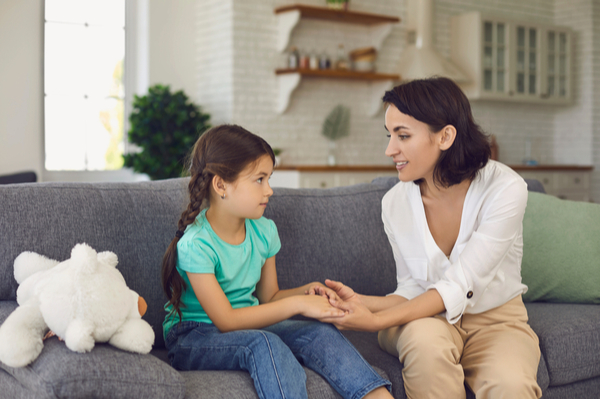It’s a big wide world out there on the internet, and in this fast-paced digital age it’s becoming commonplace for children to access the web.
While there are some great learning resources out there for children under school-age, it’s important to ensure their safety while using the internet.

The benefits of online learning
In recent years we’ve seen an increased investment in online learning. There are some clear benefits to online programs for young children including:
- Access to a variety of programs
- Opportunities to explore
- Suits a range of learning styles
- Ability to learn in their own time
- Flexibility
For parents and teachers, online programs can be a way to engage and inspire children outside of traditional pedagogy. This often means it’s friendly to a range of learning styles, utilising different mediums like video, audio and interactive games to get children excited about learning.
Useful programs for childhood development
There’s no denying that the internet is a valuable resource. This is even more true since the pandemic, when lockdowns called for online learning programs to proliferate in amazing ways.
Whether it’s science, storytelling or arts and craft, with so many educational sites and fun programs on offer it makes sense to introduce children to online learning.
The importance of online safety
We all know that the internet can pose pretty serious threats to safety. This is true for children, with online concerns including cyberbullying, harassment, predatory behaviour and exposure to unsafe content.
Letting children use the internet unsupervised is not the best idea, but with the right safeguards and supervision you can create a safe environment for children to explore online.
Staying safe online for children depends on parents, teachers and children being aware of the risks and practising safe internet habits.
Tips for creating a safe online environment

There are a number of ways to keep children safe from online threats. These include:
- Using child locks and safety settings on browsers and sites
- Setting passwords
- Installing security software
- Monitoring their internet activity
- Establishing rules for internet use and downloading apps
- Knowing what devices your child is using
- Limiting screen time
- Ensuring young children do not create social media accounts
Communication and watching for signs
These safeguards make it easier to create online safety for children but they can’t do all the work – it’s essential to talk to them about online safety. Establishing an open dialogue means that children will feel comfortable reporting anything suspicious.
Likewise, it’s a good idea to watch children for signs they’ve encountered something inappropriate, dangerous or scary. Stay calm and talk about anything that arises, then take steps to ensure it doesn’t happen again by checking the restrictions and setting for a child’s online time.
Monitoring children’s safety with technology
Technology can be a big help when it comes to internet safety.
Filters are a great way to reduce their exposure to anything inappropriate – start with turning on “SafeSearch” in Google or the equivalent setting in your search engine. Check children’s browsing history and discuss any visits to inappropriate sites, explaining why they should avoid them.
Parental control apps can also be useful if you feel you need an added layer of security. Apps like iPhone Screentime, for example, enable you to set limits on how long children can access certain apps for each day. You might like to check out what else is available wherever you get your apps.
Explaining good internet hygiene to children
It can be tricky to explain online safety in child-friendly ways. Here are some things you could discuss with them to increase their awareness:
- Why it’s not a good idea to chat with strangers online.
- That dangerous sites sometimes contain malware and viruses.
- How to spot an online scam and the importance of never clicking on any downloads or ‘free offers’ without first gaining parent/supervisor approval.
- What’s counted as ‘inappropriate’ content or sites.
- Encouraging children to let you know if they come across anything strange or scary.
Emphasising that you’re here to listen to their thoughts and concerns is a crucial part of ensuring their safety. Children need to feel empowered to participate in these discussions and make safe decisions when using the internet.
Making internet time a joint activity is also a great way to encourage safe online behaviour.
Establishing fair expectations and rules
Part of this open dialogue includes establishing reasonable expectations and rules.
When setting rules it’s best to explain your reasoning so that children see the rule as a healthy boundary rather than an unfair mandate.
Limiting Screen Time
According to recent reports, most Australian children spend too much time on screens. Official recommendations suggest that screen time for children aged between 2 and 5 should be limited to one hour of high-quality programming per day. For children between 6 and 16, recreational screen time should stay around the 2 hour mark. Limiting screen time is not only important – it’s essential for their development.
Safe and Engaged
At Selmar we encourage our learners to see the internet as a valuable resource for early childhood education. As a result, our graduates take awareness and good internet hygiene into their jobs in early learning.
We know that the internet can provide a wealth of fun, helpful and engaging programs for young children, and with the right tools and a little communication it’s a safe space for children to learn and play.
Discover up to date early childhood education courses with Selmar today.



